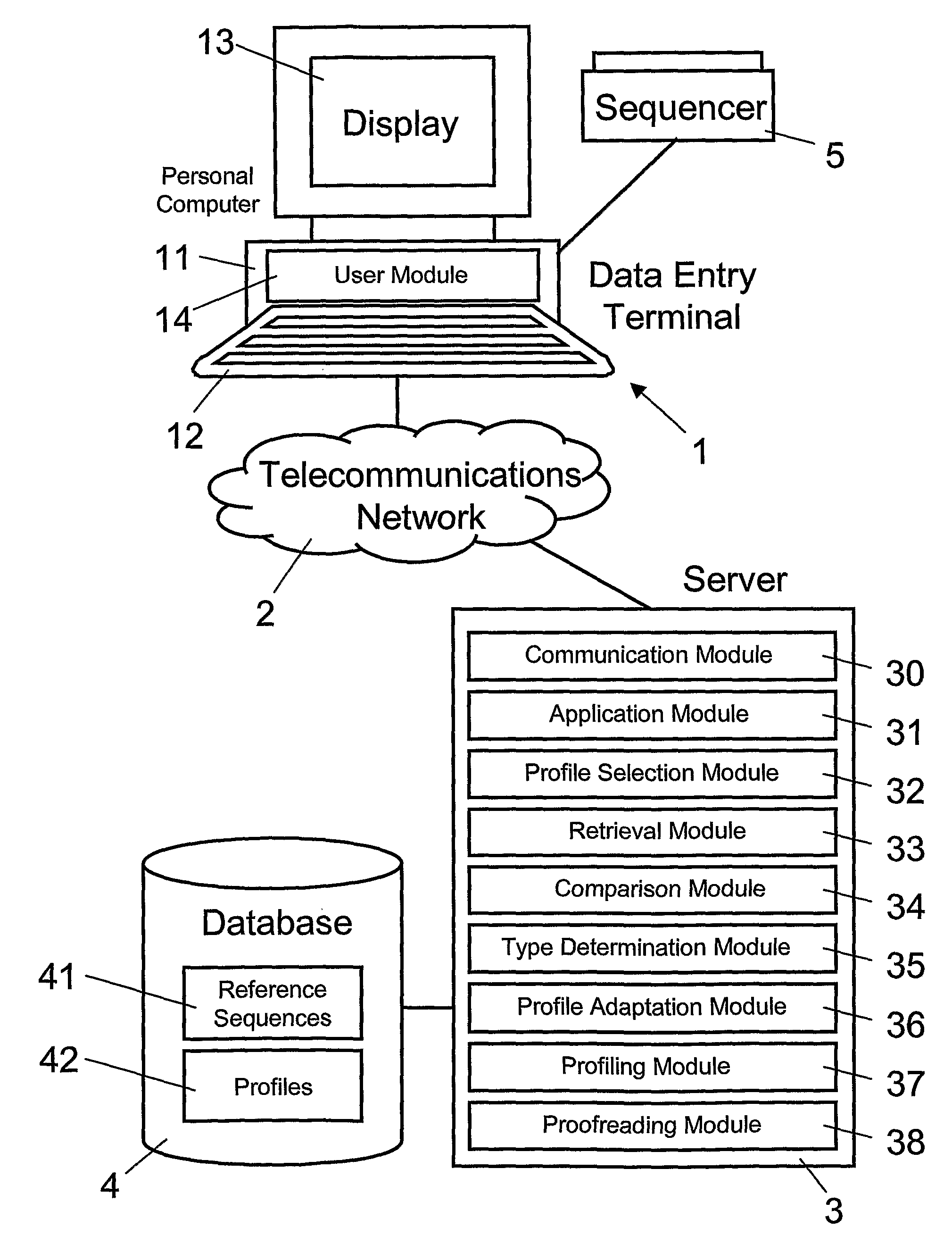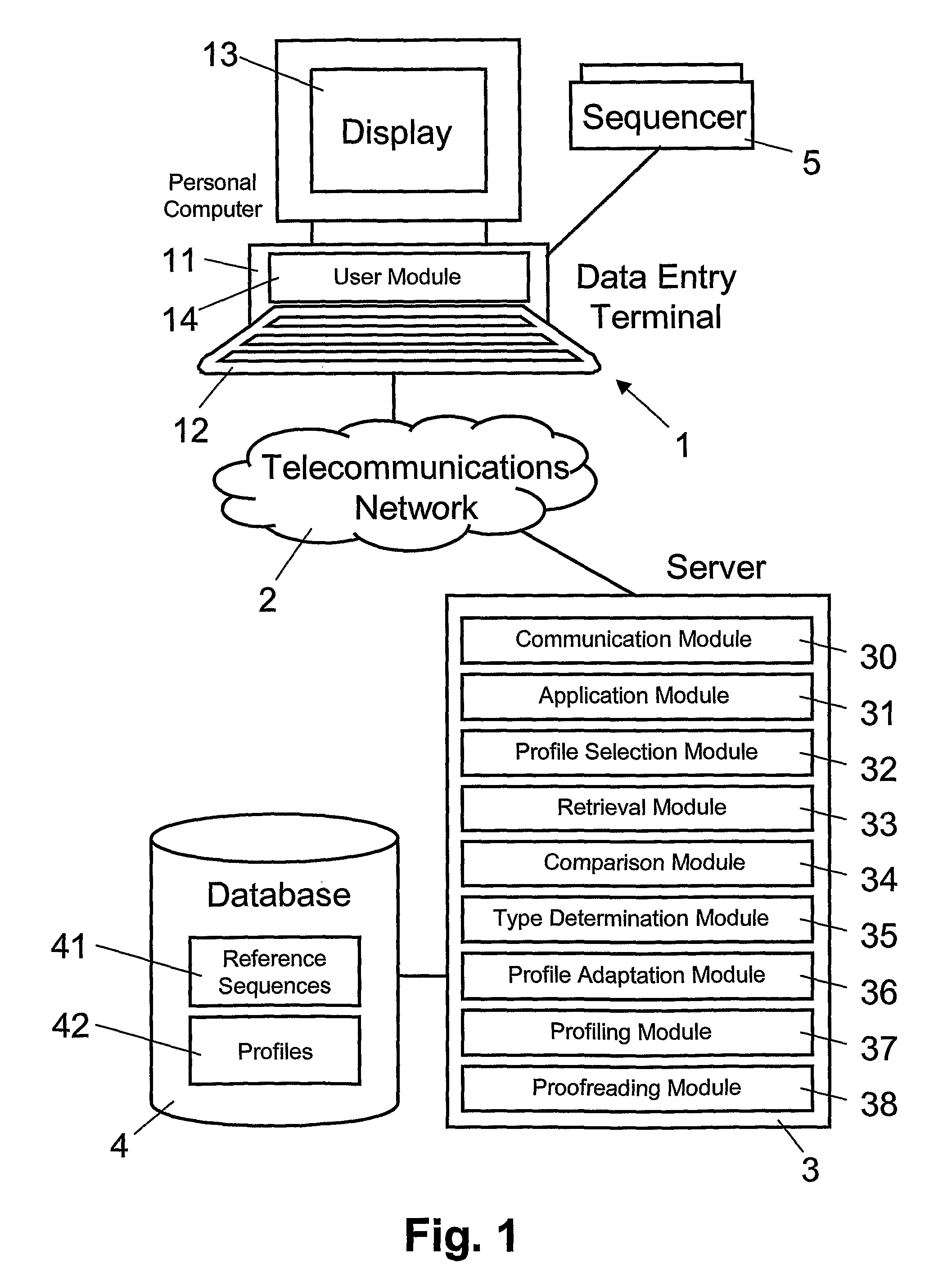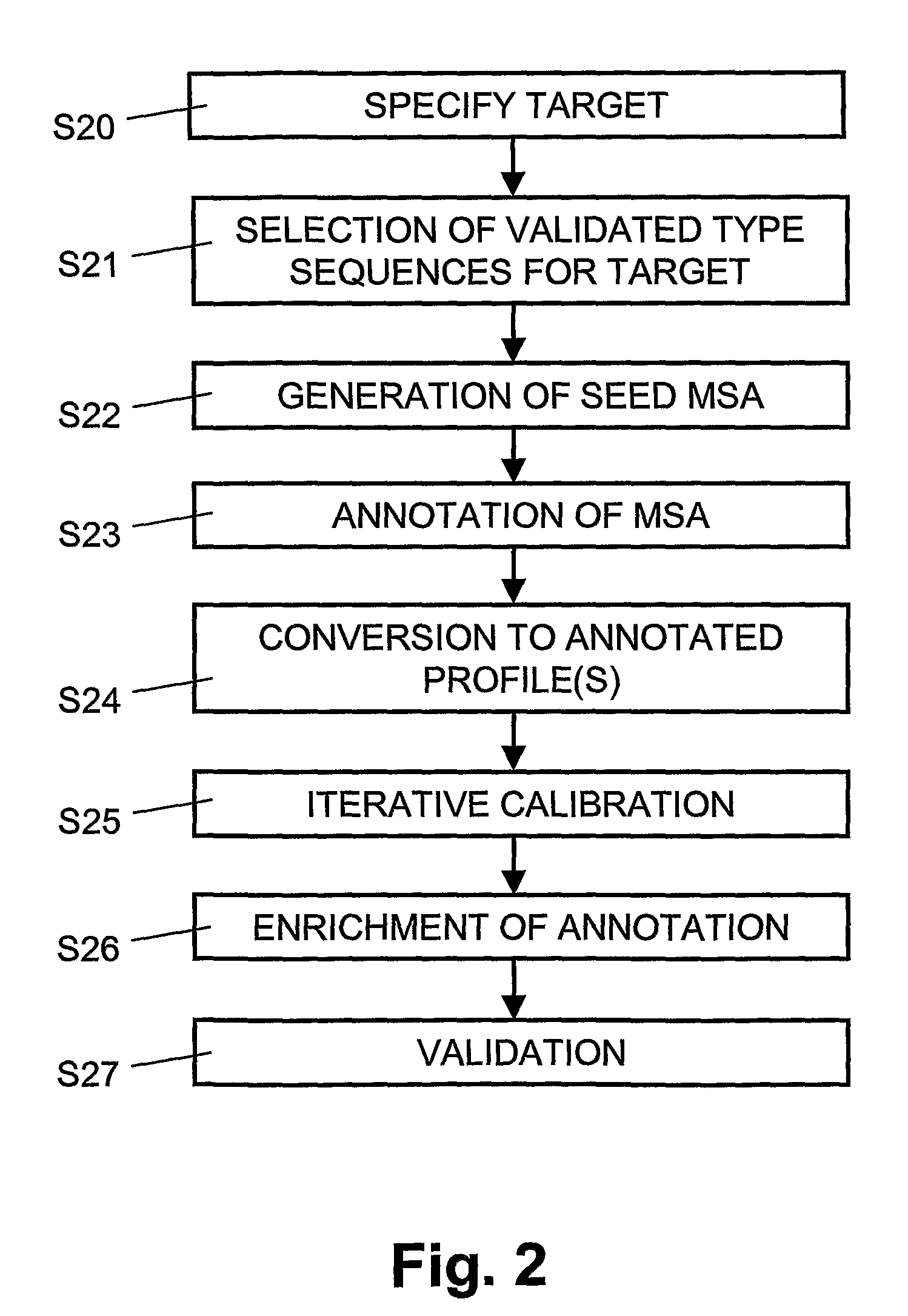[0006]In accordance with an aspect of the invention, organism types can be identified from a target
gene sequence, selected automatically from a
database is a selected profile having a highest correlation with the target
gene sequence. The sequence profile can be selected from a plurality of type-specific profiles in the
database, each profile defining informative sequence regions for differentiating individual organisms. Preferably, the type-specific profiles include
genus-specific or group-specific profiles; moreover, the type-specific profiles may include species-specific, sub-type-specific, variant-specific, and / or
clade-specific profiles. Reference sequences, related to the selected profile, can be retrieved automatically from the
database. The target gene sequence can be compared automatically to the reference sequences and comparison results, related to the informative sequence regions, can be weighted automatically. Subsequently, from the reference sequences, a type-specific reference sequence can be determined which has a best match with the target gene sequence. The best match can be determined, for example, based on the comparison results weighted for the informative sequence regions. The type-specific reference sequence having the best match with the target gene sequence, considering the weighted comparison results, can be selected automatically or set as a top entry in a sorted
list. Weighting for the informative sequence regions the comparison results makes it possible to identify the organism type from the target gene sequence while discriminating between trivial and significant inter-sequence differences. The results obtained through profile search and weighted alignment will provide a measurement reflecting correct assignment of organism type in
bacteriology, mycology and
virology. Consequently, the assignment of organism types, e.g. bacterial and fungal species or viral subtypes, is improved.
Organism types can be assigned on the basis of not just statistical criteria but also on the basis of biologically relevant profiles. Consequently, more reliable results are derived for
sequence analysis in an easy to use routine set-up. Generally, the time needed to produce results is shortened and the treatment of patients will benefit from more rapid and precise results.
[0008]In a preferred embodiment, the target gene sequence and the reference sequences related to the selected profile are assessed automatically for new informative sequence regions for the selected profile. Moreover, the selected profile can be adapted by storing a new informative sequence region as a part of the selected profile. Refining the sequence profile with newly identified informative sequence regions make it possible to consider evolutionary aspects of organisms, e.g. evolutionary relationships between species and strains. Continuous
adaptation of sequence profiles help to adjust phylogenetic and ultimately taxonomic annotations and thus will provide important information to microbiologists and physicians with regard to the
pathogenicity and
epidemiology of unknown or misclassified microorganisms.
[0012]In a further embodiment, the target gene sequence can be proofread based on the selected profile by comparing the target gene sequence to the reference sequences related to the selected profile. For differences of
nucleotide codes, located in informative sequence regions, it can be assessed whether the differences indicate another organism type.
Adaptation of the selected profile can be initiated for differences assessed to indicate another organism type. Automatic proofreading based on the selected sequence profile makes it possible to proofread the target gene sequence while discriminating between trivial and significant inter-sequence differences.
[0013]Preferably, the target gene sequence is received by a
server from a user via a
telecommunications network. Furthermore, the organism type of the target gene sequence, which can be defined by the type-specific reference sequence, can be transmitted by the
server via the
telecommunications network to a
user interface. Implementing the process on a network-based server makes it possible to provide efficiently (in terms of performance and
financial costs) automatic identification of organism types from a target gene sequence as a centralized service, available to a plurality of users connected to the
telecommunications network. Using a server-based technology for identifying organism types from a target gene sequence makes it possible for a user to use its own
computer equipment without having to install any
software or hardware. In the networked database, type-specific profiles can be added and improved continuously on the basis of target sequences supplied over the network by users. In addition, the reference
sequence database, the
software application, as well as any
software tools can be updated online without any disturbance to users. Moreover, the network-based server can enable exchange and sharing of data between distant expert institutes as well as assessment of database entries representing organism types, e.g. bacterial and fungal species or viral subtypes, with respect to their taxonomic classification. Thus, the network-based server makes it possible for experts to re-evaluate and validate reference data sets for
bacteria, mycobacteria, fungi, and viruses.
 Login to View More
Login to View More  Login to View More
Login to View More 


